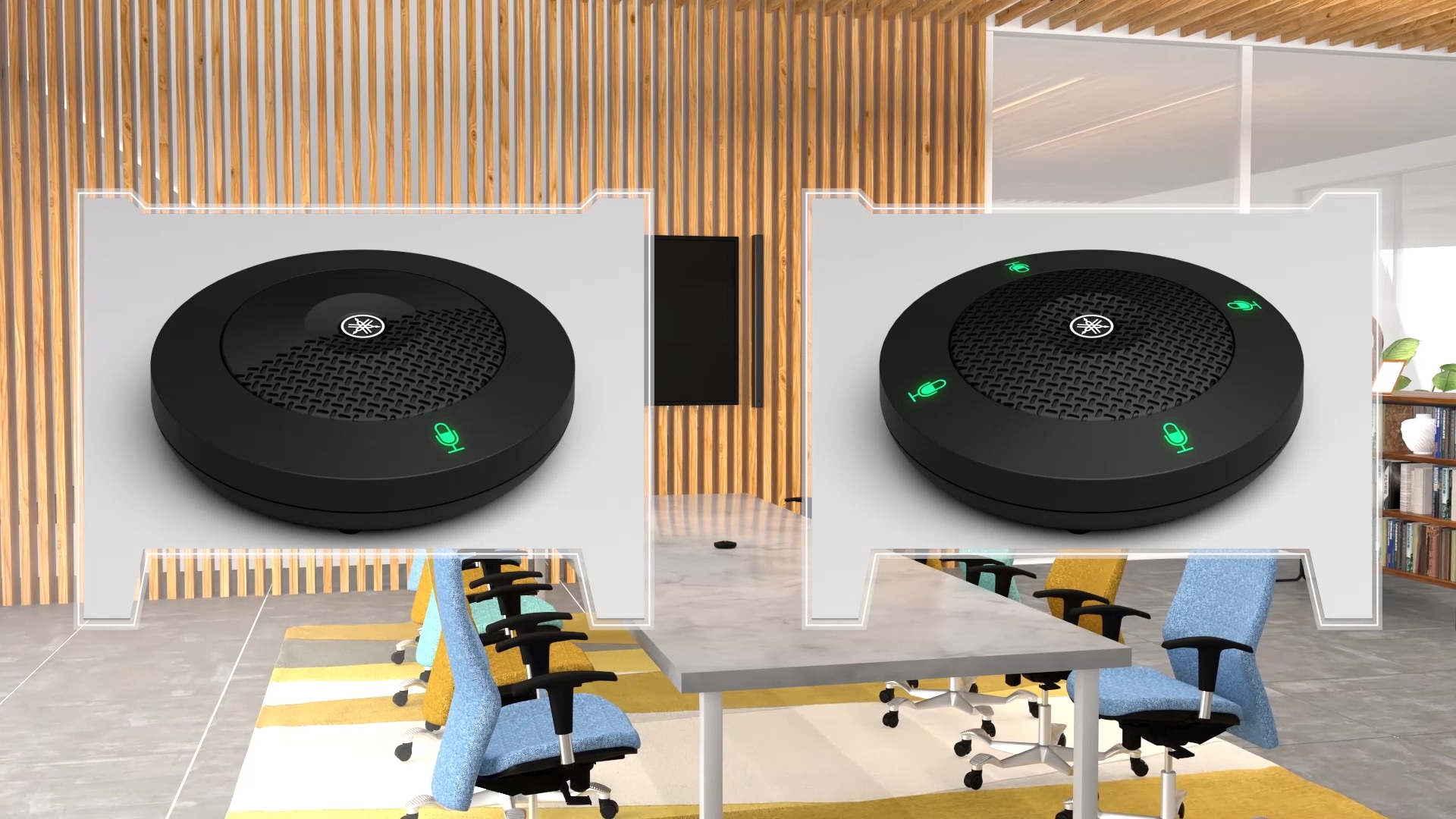Yamaha Unified Communications will showcase its range of audio solutions that are redefining effortless and effective collaboration and communication in any meeting application—remote, hybrid, or in person—at InfoComm 2022. In booth W1151, the company will demonstrate its latest innovation, the VSP-2 Speech Privacy System, along with its comprehensive ACEDIA conferencing system, RM Series microphones, and YVC Series conference phones.
"Impeccable—that's what today's meeting and learning audio environment needs to be in order for everyone to be productive," said Holger Stoltze, senior director of technical sales and marketing, Yamaha Unified Communications. "Every one of our solutions exhibit this distinction, including our new VSP-2. It was designed to solve the noise, installation, and cost challenges plaguing traditional sound masking systems. We can't wait to see everyone at InfoComm and share more about the critical role audio is playing across all applications."
[Yamaha YVC-330 and 10 More Speakerphones for the Hybrid Workplace]
Smart, Simple Speech Privacy
Yamaha's VSP-2 Speech Privacy System prevents information leakage without emitting any distracting sound-masking audio, creating an environment that makes it easy to converse in almost any office meeting space. Designed for quick retrofit, the unique system layers in three key features for optimal speech privacy: High-performance Info-Masking Technology, which is developed to mask the human voice in unwanted areas with a sound level that is 8 dB lower than conventional systems; environmental audio with four audio options that is mixed to the speech sound masker; as well as four types of sound effects that are added to unobtrusively distract others from hearing private conversations. The control unit allows users to power the system on and off, select their preferred sound effect (guitar, piano, music box, or digital device) and environmental sound (forest, brook, urban clatter, or air conditioner), and set the performance and volume level for a personalized room environment. To install, either two, four, or eight VSP-2 micro speakers are simply mounted to the ceiling or wall with the included hardware and speaker cable (non-plenum rated).
[Yamaha Roadmap to InfoComm 2022]
The Perfect Comprehensive Conferencing Bundle Featuring Standalone Microphone Options
Yamaha's ADECIA conferencing solution is an innovative family of communication products that provides a complete and customizable audio solution, delivering the most comfortable and effortless remote conferencing experience for any meeting or learning space. The easy-install solution is comprised of four Yamaha products: a choice of microphones—RM-CG ceiling array, RM-TT tabletop, or RM-W wireless—in addition to the RM-CR processor, Yamaha's long-trusted PoE switches, and VXL Series line array speakers. The complete solution immediately detects all components of the system and optimizes their configuration for the room environment, accounting for the location of speakers and microphones, reverberation, and echo behavior. Setting up a room is done through the system's configurator in four effortless steps. With USB, Bluetooth, Dante, and analog connections, this flexible system can fit a variety of meeting spaces.
The RM Series microphones within the ADECIA solution are also available as standalone options. Designed around the Dante platform, these microphones pack all of Yamaha's powerful sound technologies, including automatic voice tracking, auto gain control, adaptive echo cancellation, noise reduction, and reverberation suppression for optimal collaboration experiences—while seamlessly integrating with the room's existing conferencing equipment or a variety of third-party components.
[Yamaha's ADECIA Conferencing Solution Certified for Microsoft Teams]
Conference Phones for Effortless Collaboration Anywhere
The YVC series offers scalable device configurations to suit the room size, group size, and collaboration needs. The YVC-200 USB and Bluetooth Speakerphone is perfect for small meeting rooms with up to four people. Meeting rooms with four to 10 people will benefit from the YVC-330 USB and Bluetooth Speakerphone, which features Yamaha's innovative SoundCap technology to eliminate background noise. In addition, two YVC-330s can be daisy-chained to cover up to 16 participants. Large meeting spaces, where up to 40 people can gather, will require the YVC-1000's separate microphone and speaker system. Each model features the company's innovative sound technologies, including Human Voice Activity Detection, speaker tracking, and dynamic acoustic echo cancellation that make conversation stress-free and intuitive. They are software-agnostic and fully compatible with commonly used OSs and remote conferencing services, such as Microsoft Teams, Google Meet, Cisco Webex Zoom, and more.
Yamaha Shares Valuable Insight at InfoComm Learning Sessions
Yamaha's Holger Stoltze will also present two sessions at InfoComm.
On Wednesday, June 8, from 4:30 p.m. to 5 p.m. during the "Room Impact on Selecting the Right Microphone Technology" session, Stoltze will explore the different ways room environments impact audio quality. Unfortunately, environmental noises and room audio are often not taken into consideration when designing audio solutions for unified communications installations in rooms. Both in-person and remote participants are affected by room noise and room surface materials. Furthermore, users in the room are often unaware of the remote participant's audio experience. Therefore, different room environments require different microphone types or microphone technology. Based on noise and reverberance in the room, factors such as distance between talker and microphone, dynamic or static beam forming, noise reduction, or de-reverberation should be taken into consideration. The presentation will address several of these common problems and discuss why specific microphone technology might or might not be a good solution.
In the CTS education session "The New Demands of Hybrid Education on Classroom Audio" on June 9, from 11:30 a.m. to 12 p.m., Stoltze will discuss how hybrid education has placed a new emphasis on classroom audio that was unnoticed and unresolved in the past. The session will show how the typical one-to-many class model, with a teacher or trainer at the front of the class, requires voice-lifting as the teacher repeats students' comments or questions for all to hear. This challenge has multiplied in hybrid learning environments, with many classes requiring interaction between students — many-to-many — to achieve the full potential of learning. This session will demonstrate how to effectively mic the whole room, how to ensure that many-to-many discussions are easily understood by remote participants, and how remote participants can be well understood by those in the classroom.
